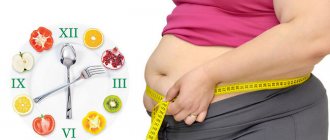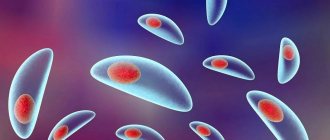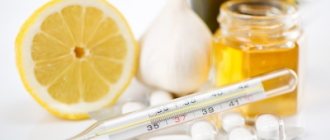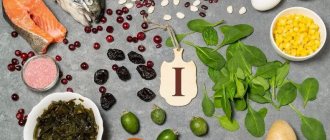Tips for reducing sugar levels
Reducing sugar levels in diabetes mellitus can be achieved through a combination of physical activity, medication and a balanced diet. This balance will help:
- Maintain blood glucose, blood pressure, and cholesterol levels within target ranges;
- lose weight or stay at a healthy weight;
- prevent the development of complications;
- maintain good health and energy 1.
There are general rules for creating a diet to control sugar content:
- Plate rule. Take a plate with a diameter of 23 cm and mentally divide it into 4 equal parts. Half of it should be vegetables (except potatoes, peas and corn), a quarter should be lean proteins, and a quarter should be grains or other starchy foods1
- Minimizing sweetened products: sugary drinks are especially dangerous - lemonade, tea with sugar, industrial fruit juices2
- It is better to use fresh fruits and vegetables as snacks.
- Steam, stew, bake food in its own juice, without adding oil, as it increases the total calorie content3
Prohibited, permitted and limited products
Since nutrition for diabetes is the basis of therapy, it is necessary to clearly differentiate food. It is allowed to prepare dishes only from approved products, but it must be taken into account that depending on the culinary processing, the glycemic index of products may change.
What you need to give up
Pathology of the first type is controlled with insulin injections, but this does not mean that the patient is allowed to eat absolutely everything. The following are absolutely prohibited:
- confectionery products (pastry, cakes);
- sweet butter and puff pastries;
- products made from sweet choux and shortbread dough;
- chocolate + sweets, ice cream;
- fast food products and dishes;
- meat and fish products prepared by smoking;
- chips, flavored snacks, popcorn;
- mayonnaise-based fatty sauces;
- bottled tea, packaged juices, lemonade, and any other sweet drinks.
Other prohibited foods by category
| Meat | Conservation | Fish | Cereals | Flour products |
| pork, duck, goose | meat and sprat pate, canned fish, fruit in its own juice, preserves and jams, pickled vegetables | preserves, cod liver | sago, semolina, white rice | pasta categories B, C, 1st and 2nd class, pasties, white bun (loaf) |
Fruits on the menu are selected according to the glycemic index. For diabetes mellitus, fruits indexed with a number higher than 60 (figs, grapes, papaya, carom, guava) are not recommended.
Strictly controlled products
A separate category consists of limited (limited for consumption) products. The bulk of them are foods with an average glycemic index (from 30 to 70 units). The most popular include:
- root vegetables: potatoes and beets;
- semi-finished products: dumplings, khinkali, dumplings, etc.;
- flour products: durum pasta, pancakes, pancakes;
- melons and fruits: pumpkin, watermelon, melon, pineapple, banana, persimmon, mango, kiwi;
- Cereal dishes: millet, oatmeal, buckwheat porridge, couscous.
Fatty fish (sturgeon, halibut, capelin, mackerel) are necessary as a source of omega-3.6 fatty acids. Their presence in the diet is also limited. How often and in what quantity you can eat the listed foods must be agreed with your treating endocrinologist.
What is allowed
Since in diabetes the diet is based on fiber and protein products, the menu should include vegetables, fruits, meat and fish dishes. Diabetics with type 1 disease are allowed starchy carbohydrates daily. The limit is the amount of food eaten. These products include: potatoes, cereals and legumes. Recommended cereals are: barley, barley, buckwheat, wheat, oats.
Legumes are digested without the participation of insulin and contain a large amount of minerals. For patients with diabetes, legume and vegetable side dishes, bean, pea, and lentil soups are recommended. You can make salads and pates from legume products. Dairy and fermented milk products are welcome in the diet of a diabetic patient. The choice is based on the percentage of fat content of the products. Only curd mass and glazed cheese curds are prohibited. The fat content in products is allowed as follows:
| Cheese | Milk | Cream and sour cream | Yogurt | Cottage cheese | Ryazhenka |
| up to 40% | 2,5% | 10% | 2,5% | up to 9% | up to 4% |
It is preferable to eat eggs as an omelet or soft-boiled. Number of pieces per week – 3–5. Sweets and pastries occupy a special place on the menu. Desserts without glucose are available for diabetic patients. They can be purchased in specialized departments of supermarkets. It is better to prepare your own baked goods according to recipes for diabetics. Such dishes are based on the use of rye (linseed, corn) flour; sugar in them is replaced with fructose or stevioside.
The main condition for use is a strict limit. You can’t overeat, even on diabetic sweets. To prevent the food from being bland, it is allowed to flavor dishes with spices such as cinnamon, oregano (oregano), all types of peppers, and cloves. Protein products in the menu should be at least 20%. Sources of protein are:
| Poultry and meat | Fish and seafood | Mushrooms | Nuts |
| turkey, chicken, rabbit, veal, lean beef | navaga, telapia, blue whiting, pollock, crabs, shrimp, mussels, etc. | fresh (frozen), dry, canned champignons | all types |
Nuts should be eaten in doses, since the product has a high energy value and can also cause constipation. Recommended vegetable fats include olive, corn, flax, and sunflower oils. The amount of butter in the diet should be reduced as much as possible. This limitation is due to the ability of animal fat to accelerate the absorption of glucose, and also to be deposited in the form of cholesterol plaques on the walls of blood vessels. It is better to eat whole grain and rye bread.
The difference between diets for type 1 and type 2 diabetes
In type I diabetes, the diet may have the usual calorie content typical for people of similar height and weight. The diet is supportive in nature and is clearly related to how much insulin a person living with diabetes consumes.
Type II diabetes is often accompanied by increased body weight, arterial hypertension, hypercholesterolemia and metabolic syndrome. Therefore, the diet is aimed primarily at reducing body weight. This is manifested in reduced caloric content of food, a decrease in the amount of fat and easily digestible carbohydrates in the diet.
But there are also common points: both groups of people require a complete, balanced diet of proteins, fats and carbohydrates, as well as vitamins, liquids and minerals 2.3.
Diet for gestational diabetes mellitus
A diet for gestational diabetes mellitus in a pregnant woman is almost the only method for maintaining normal blood sugar concentrations, since the use of medications will negatively affect the fetus. The essence of the diet is to exclude fast carbohydrates.
In case of gestational diabetes mellitus, the use of medications is not recommended, so it is very important to monitor your diet and avoid critical situations
The diet should be varied but balanced so that the fetus receives as many different vitamins and microelements as possible, necessary for its normal development. Under no circumstances should you switch to “starvation diets”. You should also not overeat due to the risk of hyperglycemia. Nutrition should also be fractional and clearly defined in chemical composition. The basis should be protein food - at least 30-60%, fats are allowed up to 20-40%, complex carbohydrates are exclusive. Meals should be divided into main meals and snacks.
While breastfeeding, you should not switch to a low-carbohydrate diet. In the absence of edema and high blood pressure, it is necessary to drink clean water at least 1.5–2 liters per day.
IMPORTANT! It is necessary to measure blood glucose levels using a glucometer no later than 1–2 hours after eating.
Always have some approved products on hand. This will allow you to satisfy your hunger in time and prevent the diet from slipping, accordingly, your condition will be normal
Prohibited products:
- store-bought juices;
- carbonated drinks;
- baked sweets;
- sugar and any sweeteners;
- all fast food (canned food, fast food);
- semolina and rice porridge;
- buns, white bread;
- alcoholic drinks;
- cocoa containing products;
- meat and fish with high fat content.
Sample menu for the day:
- 8:00 – breakfast: porridge from acceptable cereals, black or green tea without sugar;
- 10:00 – lunch: rye or whole grain bread with cheese, green apple;
- 13:00 – lunch: borscht or lean soup, steamed vegetable cutlets;
- 16:00 – afternoon snack: cottage cheese pie or casserole, a glass of berries with a low glycemic index;
- 18:00 – dinner: baked fish with fresh vegetables.
How to reduce the risk of complications with type 1 diabetes
Rules to follow when creating menus 2.3:
- People can consume proteins and fats without restrictions (provided they have normal body weight and take into account calorie content). If you are overweight, it is recommended to limit the fat content in your diet.
- Most vegetables can be eaten with virtually no restrictions. Without counting your sugar levels, you can eat green leafy vegetables, zucchini, peppers, cabbage, and legumes, provided they are consumed in moderation (about 200 g per meal).
- Carbohydrates, which are found in grains (bread), fruits, some vegetables (potatoes, corn), milk and dairy products, and sugar, need to be taken into account. The system of bread units helps you count carbohydrates.
Bread unit system
One bread unit is the amount of any product that contains from 10 to 12 grams of carbohydrates. This is exactly how much is contained in one piece of bread, which is why the units are called bread units (XE). You can find out their content in a particular product from special tables 2.
The bread unit system helps determine the dose of short-acting insulin, which is administered before meals. To do this, you need to measure your glucose level and count how many units the portion you plan to eat contains. According to recommendations, one serving should contain no more than 8 XE. Based on these data, the required dose of insulin 2.4 is calculated.
UZ "Mogilev City Emergency Hospital"
This section is quite complex. However, it is necessary in order to lead a freer lifestyle and achieve diabetes compensation. It will be difficult at first, but then it will become a habit and will be done automatically. We all learned to read syllables, and no one got behind the wheel of a car and immediately drove off.
There are 2 main ways to maintain compensation for diabetes:
1) practically free nutrition (this requires frequent measurements of glycemic levels, accurate counting of carbohydrates in food and the ability to independently adjust the insulin dose);
2) a fixed regimen of insulin therapy (recommendations in hospital discharge notes are based on this approach, and there should be a fixed diet with the same amount of carbohydrates and the same level of physical activity).
In both cases, it is necessary to be able to count food correctly. The first path is more difficult, but it is necessary for young active people. The second way is more suitable for those who lead a measured lifestyle, for example, for older people. With the second way, you can create several menu options and stick to it.
A. Calculation of carbohydrates.
Insulin is necessary for the absorption of carbohydrates.
To compensate for carbohydrates with insulin, you need to clearly determine their amount. Those. For a certain amount of carbohydrates, a certain amount of insulin must be injected. This ratio is individual for each person. If you adhere to a constant insulin therapy regimen and do not change your insulin doses yourself, then you need to constantly consume the same amount of carbohydrates. If you want to adhere to a more liberal diet, you need to be able to count carbohydrates and calculate the dose of insulin for them.
The amount of carbohydrates can be determined in grams or bread units.
The concept of “bread unit” (XU) was introduced for the convenience of calculations. 1 XE = 10-12 grams of carbohydrates. For convenience, it is better to take 1 XE of carbohydrates.
To find out the amount of XE, you need to divide the amount of carbohydrates by 10 (if you count 10 g of carbohydrates in 1 XE).
1 XE on average increases the level by 2-2.8 mmol/l.
For example, 100 g of cookies contains 70 g of carbohydrates, which is 7 XE. If you eat 100 g of cookies, in the absence of insulin in the body, glucose can increase by 14-19 mmol. But these numbers are individual.
So-called diabetic products often contain alcohols as sweeteners (isomalt, sorbitol). They do not increase blood glucose, so the amount of alcohols must be excluded from the total amount of carbohydrates.
For example, 100 g of cookies contains 70 g of carbohydrates, including 20 g of sorbitol. So 70-20=50/10=5 XE.
In the photo above, 100 g of product contains 15 g of carbohydrates (Total Carbohydrate), of which 15 are sugar alcohols (Sugar Alcohol). This product will not increase blood glucose levels.
There is no need to subtract fructose! Fructose increases blood glucose to the same extent as regular sugar.
In the presence of diabetes, 2 problems arise when calculating XE:
- Determine how much XE is contained in this particular product that you are now going to eat (not in 100 g, but in this exact amount of the product that you want to eat, for example, in the porridge that you put on your plate and are going to eat).
- How much food should I eat for the required amount of XE (for example, in the morning I eat 3 XE, but I don’t want porridge, I want potatoes).
In principle, this is 1 task, but from different sides.
- Determination of the amount of XE in a product
The amount of XE can be determined approximately (porridge by spoons, fruit by cups, fruit by the piece), or it can (and should) be more accurately determined by weight.
A rough estimate is taught in many diabetes schools. Why? – Because many patients consider counting with spoons extremely burdensome. But, at least at first, it’s better to weigh your food in order to get used to determining portion sizes by eye. It's not that difficult to install kitchen scales in the kitchen.
How to determine how much XE is contained in a given amount of food by weight:
- find out how many carbohydrates are in 100 g of the product (on the packaging - see the nutritional value of the product - carbohydrates);
- Divide the amount of carbohydrates by 1000 and multiply by the weight of the product (if we count in carbohydrates, then we divide not by 1000, but by 100).
CARBOHYDRATE CONTENT in 100 g x WEIGHT OF FOOD (in grams)/1000
For example, we find on the Internet the nutritional value of potatoes - 17 g of carbohydrates per 100 g. We weigh the potatoes that we want to eat, we get 200 g. 17/1000 * 200 = 2.4 XE (if we count in carbohydrates, then we divide not by 1000, but per 100: 17/100*200 = 24 g carbohydrates).
Vegetables must be weighed before cooking! (During cooking, the weight of the product changes, but the carbohydrates remain.) Approximately, 1 medium potato weighs 60 g, 17/1000*60 = 1 XE. Those. 1 medium potato is approximately 1 XE. But it’s better to weigh the potatoes to get an idea of what 60 g is.
It is correct to weigh dry cereals and pasta, cook and weigh the finished porridge. The amount of XE of dry cereal included in the porridge is divided by the weight of the finished porridge and the amount of XE in your specific porridge is obtained. The porridge may turn out different (in 100 g of viscous porridge there will be less XE than in 100 g of crumbly porridge).
Let's look at buckwheat porridge.
Let's take a cut glass of buckwheat, this is 170 g of dry cereal. In 100 g - 57 g of carbohydrates. 57/1000*170= 9.69 XE. We weighed the finished porridge and got 570 g.
9.69 XE/570*100= 1.7 XE in 100 g of porridge.
If the porridge was cooked in milk, one must take into account the carbohydrates contained in the milk. For example, instead of water, 300 ml of milk was added to the above porridge (100 ml - 0.47 XE, 300 - 1.41 XE). 9.69+1.41=11 XE/570*100=1.9 XE in 100 g of porridge.
Pancakes, pies, etc. are baked in the same way. The amount of XE of all products included in the pie (sugar, flour, milk) is counted. Weigh the whole pie. The amount of XE dry products is divided by the weight of the pie, the amount of XE in 1 gram is obtained, multiplied by 100 - per 100 g.
It's worth doing this at least a few times. Then you will be convinced that a small piece of pie will carry 6-7 XE.
- Calculation of the amount of product for the required amount of XE.
To do this, you need to divide 1000 by the amount of carbohydrates per 100 g or 100 divided by the amount of XE per 100 g.
For example, in 100 g of porridge there are 17 g of carbohydrates, 1000/17 = 58 g of porridge per 1 XE.
In the future, such calculations will not be necessary. It’s convenient to develop XE tables for your menu and put them in the kitchen until the calculations become automatic. You can take Rustem's table as a basis.
How much XE should you eat per day?
| Normal body weight Hard physical labor 25-30 XE Moderate physical labor 20-22 “Sedentary” work 16-18 Sedentary lifestyle 12-15 | Overweight or obesity Hard physical labor 20-25 XE Moderate physical labor 15-17 "Sedentary" work 11-16 Sedentary lifestyle - at least 10 |
Body weight deficiency – 25-30 XE per day. Within each category, men use toward the upper end of the range, and women toward the lower end.
It is not recommended to consume more than 7 XE per main meal.
How can you make your life easier? At first, write down your results. We cooked porridge and wrote it down.
| Food | Carbohydrates per 100 g | Weight per 1 XE |
| Hercules porridge (80 g flakes, 500 milk) | 14,5 | 70 |
| Hercules porridge (100 g flakes, 500 milk) | 15,7 | 64 |
| Hercules porridge (80 g flakes, 500 water) | 9,2 | 109 |
Such a sign can be made for all products and hung on the refrigerator. In the future, everything will work out automatically.
At first, you need to keep some formulas on hand:
- Calculation of carbohydrate content in 100 grams of product (if we prepare food from several ingredients containing carbohydrates)
The amount of all carbohydrates that the product contains/total weight of the product*100
- Calculation of XE in the product
CARBOHYDRATE CONTENT in 100 g x WEIGHT OF FOOD (in grams)/1000
- Calculation of the amount of product for the required amount of XE.
1000/ amount of carbohydrates per 100 g.
B. Glycemic index
Foods with different glycemic indexes have different effects on blood sugar over time (whether they raise glucose levels quickly or slowly). The higher the glycemic index, the faster your blood glucose will increase (such foods should be excluded from the diet, but they are good to eat during hypoglycemia).
Fatty foods increase glucose more slowly because fats inhibit the absorption of carbohydrates (fried potatoes will increase glucose less than mashed potatoes; but mashed potatoes can be slowed down with oil).
Liquid foods (especially warm foods) will increase blood glucose faster.
The absorption rate is also affected by:
- degree of processing of the product (the finer, the faster);
- speed of food intake;
- food temperature;
- Is food washed down?
The glycemic index also needs to be taken into account in order to know which foods are best to eat at what time of day. To avoid high blood glucose levels, the action profile of dietary insulin must match the absorption profile of carbohydrates from food. For example, if carbohydrates are absorbed before insulin begins to act, we will get high glucose levels. If later, we can get hypoglycemia.
Depending on the time, insulin acts differently in the body. In the morning, insulin unfolds slowly; to avoid a high food peak, it is necessary to eat foods with a low GI. At lunchtime, insulin works faster - here it is important to combine foods with high and low GI. In the evening, insulin works fastest - foods with a higher GI are suitable.
Approximate list of products depending on meals
| Breakfast | Buckwheat, oatmeal (not Hercules!), barley porridge, pancakes, dumplings, croutons, omelet, potato pancakes, zucchini pancakes, pasta, cottage cheese. |
| Dinner | Soup, buckwheat, rice, pilaf, boiled, fried potatoes, mashed potatoes, dumplings, potato babka, cabbage rolls, pasta, beans, bread. Vegetable salads will help slow down the absorption of food; they can regulate the pause and/or high blood sugar before meals. |
| Dinner | Rice, boiled potatoes, mashed potatoes, cabbage rolls, millet, corn porridge. Protein – up to 100 grams, so as not to take it into account when selecting the insulin dose |
| Snacks | Fruits, cookies, yoghurts. |
If you use ultra-short insulin analogues, then fruits should be included in the main meal (possibly with a short pause after the main meal).
B. Meal frequency.
Depends on the type of insulin. With genetically engineered insulins (monoinsulin, actrapid, humulin, gensulin), snacks are usually necessary at the peak of insulin action, i.e. usually 2 hours after injection).
On analogues (apidra, novorapid), snacks are not needed.
Is it possible to eat extra food when you want and inject extra insulin on it? In principle, it’s possible, but it’s better not to do this until you learn how to compensate, because profiles of different doses will be layered on top of each other. Before this, it is better not to administer a new dose until the previous dose of insulin has been completed (for genetically engineered insulins - 5 hours, for analogues - 4 hours).
D. Pause between insulin administration and food intake.
In addition to the GI of foods, the exposure time between the injection of short-acting insulin and food intake (pause) plays a huge role. Selected individually. The longest break is usually for breakfast. Insulin analogues are administered without a pause or after meals.
More details about the pause are written in the section “Selection of doses of short-term insulin”.
D. Protein-fat units
Proteins and fats do not contain carbohydrates, but after consuming them, carbohydrates (glucose) are produced through biochemical reactions already inside the body and blood glucose can increase. The effect of proteins and fats on blood glucose is very individual and differs from person to person. For some they increase blood glucose, for others they do not. This can only be determined experimentally by measuring glucose after various meals. Very roughly, 100 g of proteins can be equated to one XE.
In any case, the effect of proteins on SC will be much lower than the effect of carbohydrates. At the same time, proteins and fats increase blood glucose slowly and begin to “climb out” after a few hours.
To determine how proteins affect your blood glucose levels, you need to measure your blood glucose 3-4 hours after eating a protein meal (for example, if you ate a lot of meat without carbohydrates, measure your blood glucose level 3-4 hours later).
Diabetes mellitus type 2: nutrition principles
The diet for type 2 diabetes mellitus depends on body weight: with normal weight, the number of calories should correspond to expenses, with increased weight, it should be lower than them (low-calorie diet, hypocalorie diet).
Basic principles of nutrition for type 2 diabetes 3-6:
- Food should be rich in fiber, which inhibits the absorption of sugar, preventing a sharp increase in blood glucose levels. This is achieved due to the high content of vegetables in the diet. On average, the level of fiber in the daily menu should be from 20 to 40 grams.
- When preparing food, it is better to keep cooking to a minimum. It is important to remember that when grinding or heat processing carbohydrate-containing products, glucose is absorbed much faster.
- Sugar and products containing it, including tea and coffee with sugar, should be limited as much as possible.
- Sweeteners can be eaten in moderation, taking into account calorie content. Non-caloric sweeteners saccharin and aspartame can be consumed as needed. The so-called sugar analogues xylitol, sorbitol, and fructose are rich in calories, so they are not recommended for overweight.
- Alcohol is harmful to health, including diabetes. It is high in calories—1 gram of pure alcohol contains 7 kcal—and may contribute to weight gain and poor diabetes control.
Basics of table No. 9-B
For maximum accuracy in calculating daily menu products for type 1 diabetes (diabetes mellitus), an XE value equal to 25 g of bread (hence the name) or 12 g of carbohydrates is used. Every day the patient is allowed to consume, on average, 24 units of bread. Products can be replaced according to taste, but a single meal should not exceed 8 XE.
Considering that eating with Diet No. 9 is recommended 5-6 times a day, the dosage of insulin and the amount of XE should adequately correspond to each other. In order to process 1 unit of bread without harm to health, a diabetic needs from 1.5 to 2.5 units. insulin. The exact amount depends on the stage of diabetes, age and physical activity of the patient. There is no need to calculate XE yourself. There are specially designed tables according to which the diabetic menu is compiled.
Sample food table
With morning and afternoon insulin injections, 2/3 of the amount of carbohydrates must be concentrated in these meals. You should eat after the injection after a quarter of an hour, and the second time - after 3 hours. If the medicine is administered before dinner, biscuits or dryers should be added to the evening kefir (ryazhenka, etc.). This will help prevent a sharp drop in sugar (hypoglycemia) during sleep. The diet for type 1 diabetes includes an increased amount of foods containing complex carbohydrates (relative to “Diet No. 9-A”).
Polysaccharides (complex carbohydrates) are absorbed slowly and do not cause “jumps” in sugar. In addition, insulin-dependent patients monitor their body weight less closely. Polysaccharides are:
Foods that lower blood sugar
- glycogen (found in protein foods);
- pectin (the main source is vegetables, fruits and berries);
- fiber or cellulose (present in abundance in vegetables and herbs);
- starch (is a component of potatoes, pasta, legumes and grains).
As for protein foods, their consumption does not have a big effect on blood glucose levels. The process of gluconeogenesis (the formation of glucose from amino acids) occurs slowly, without causing a dramatic change in the patient’s condition. In addition, many of the amino acids that the body needs cannot be synthesized on its own, but are obtained from protein. However, you should not limit the carbohydrate component of your diet too much.
A low-carbohydrate diet is allowed only in the compensated stage of diabetes and for a certain period of time. Otherwise, complications of a cardiovascular nature may occur (due to excess fat), on the renal apparatus and hepatobiliary system (due to the abundance of proteins in the body, excess uric acid may develop). A deficiency of carbohydrates in the diet leads to inhibition of brain activity and a decrease in body tone.
Important! You should not do diet therapy on your own. The doctor must select the correct nutritional system based on individual indicators.
Nutritional Guidelines to Reduce the Risk of Complications in Type 2 Diabetes
To reduce the risk of developing cardiovascular complications, as well as normalize lipid metabolism, it is important to follow several more principles of a healthy diet 2-6:
- Reduce saturated fat: it should not account for more than 10% of your total daily calories. Red meat, dairy products, baked goods, fast food, egg yolks, and sausages are rich in saturated fats.
- Unsaturated fats should be consumed in required quantities. They are found in vegetable oils, fish, nuts, and seeds. About 2/3 of the total amount of fat should be of vegetable origin - olive and other vegetable oil.
- The salt content must be reduced to 5 grams per day, and in the presence of edema - to 3 grams.
Main nuances
A specialized diet plan is prescribed to patients individually by their attending physician. Experts recommend adhering to the following rules:
- increase the number of doses up to 6 times a day with small portions, taken every 2 or 3 hours;
- maintain a balance of proteins, carbohydrates, fats;
- the number of calories received should correspond to their loss;
- in food, preference is given to vegetables, fruits, cereals, lean meat and fish products, natural juices, and dairy products.
The list of permitted products is presented:
- black or diabetic bread – up to 200 g daily;
- vegetable soups, fish and meat broths - no more than once a week;
- poultry and meat dishes - preference is given to beef, chicken, rabbit;
- vegetables and herbs - potatoes, beets, carrots (up to 200 g per day), cabbage, radishes, cucumbers, zucchini, tomatoes, herbs in natural, boiled form, almost without limitation;
- cereals, legumes, pasta - consumed 1-2 times a week; when used, all carbohydrate products are excluded from the menu;
- chicken eggs – up to 2 units per day, cooked in the form of an omelet or soft-boiled;
- sour and sweet and sour berries, fruits - Antonovka, oranges, lemons, cranberries, red currants - up to 300 g daily;
- dairy products - cottage cheese (from 50 to 200 g), yogurt or kefir (up to 2 glasses), milk (as decided by the doctor).
The curd mass is used to prepare pudding, casseroles, cheesecakes, etc. With its help, lipid metabolism is stabilized, liver function is normalized, and liver fatty changes are prevented.
Among drinks, preference is given to tea with milk, weak coffee, fruit and berry or tomato juices. You need to use at least 5 glasses of liquid per day. If the patient consumes soups, then they are included in the previous indicator.
Nutrition rules for every day
- Eat more dietary fiber. There is evidence of a reduction in mortality in people with diabetes when fiber is added to their diet (at least 14 g per 1000 g of food eaten).
- Limit the content of trans fats as much as possible: on product labels they are designated as “hydrogenated vegetable fats”, “margarine”, “milk fat substitute”, etc. 8
- Reduce the amount of sugars, refined grains and high-starchy foods.
- Replace sugar with sweeteners.
- Give preference to whole foods. 9










